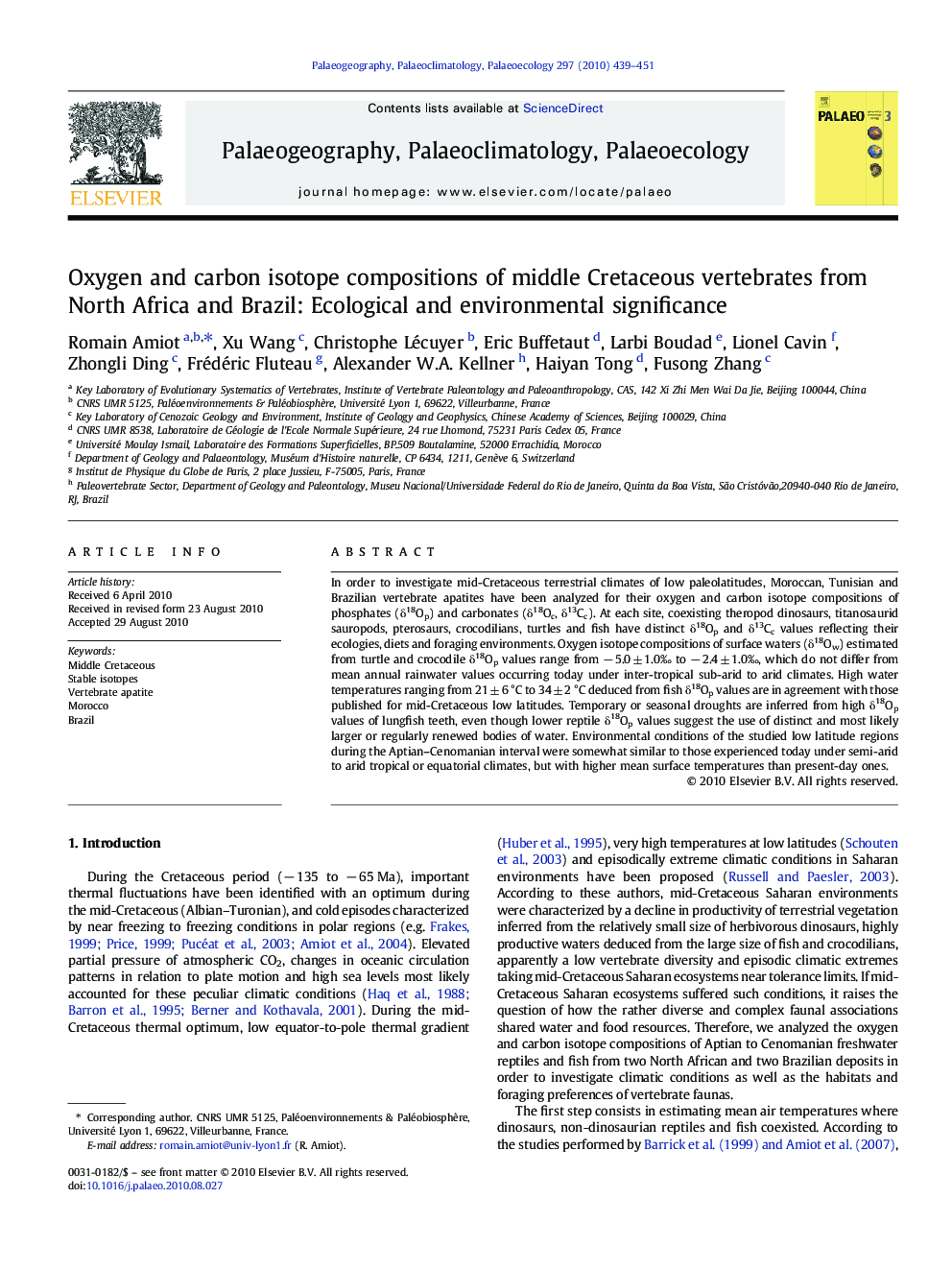| Article ID | Journal | Published Year | Pages | File Type |
|---|---|---|---|---|
| 4467488 | Palaeogeography, Palaeoclimatology, Palaeoecology | 2010 | 13 Pages |
In order to investigate mid-Cretaceous terrestrial climates of low paleolatitudes, Moroccan, Tunisian and Brazilian vertebrate apatites have been analyzed for their oxygen and carbon isotope compositions of phosphates (δ18Op) and carbonates (δ18Oc, δ13Cc). At each site, coexisting theropod dinosaurs, titanosaurid sauropods, pterosaurs, crocodilians, turtles and fish have distinct δ18Op and δ13Cc values reflecting their ecologies, diets and foraging environments. Oxygen isotope compositions of surface waters (δ18Ow) estimated from turtle and crocodile δ18Op values range from − 5.0 ± 1.0‰ to − 2.4 ± 1.0‰, which do not differ from mean annual rainwater values occurring today under inter-tropical sub-arid to arid climates. High water temperatures ranging from 21 ± 6 °C to 34 ± 2 °C deduced from fish δ18Op values are in agreement with those published for mid-Cretaceous low latitudes. Temporary or seasonal droughts are inferred from high δ18Op values of lungfish teeth, even though lower reptile δ18Op values suggest the use of distinct and most likely larger or regularly renewed bodies of water. Environmental conditions of the studied low latitude regions during the Aptian–Cenomanian interval were somewhat similar to those experienced today under semi-arid to arid tropical or equatorial climates, but with higher mean surface temperatures than present-day ones.
